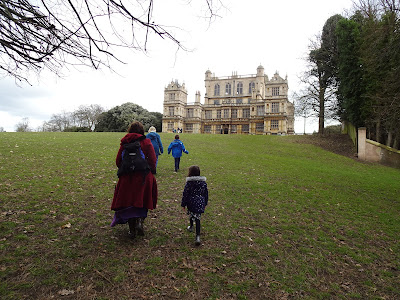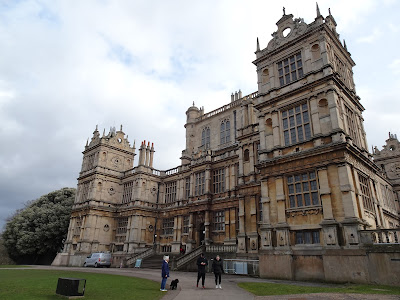All pictures taken during my visit to Mersea island.
During a recent holiday on Mersea Island with the rest of the family the wife and I attended a Sunday service at the church of St Edmunds in West Mersea - see the picture above. The church is in the South of the Island a few yards from the coast. The island can only be accessed by a causeway subject to periodic tidal flooding. When one alights from the causeway at low tide St Edmunds is on the opposite side of an island which at the widest is about 7 km across. Although Mersea island is not far from London these circumstances give St Edmunds that cut-off back-of-the-beyond atmosphere, an atmosphere which also pervades Happisburgh and Terice House in Cornwall.
 |
| St. Edmund's, Nave and Chancel |
The fabric of the church displays evidence of a long history of change, structural improvisations and innovations. The north aisle is separated from the main nave by a colonnade of relatively spindly perpendicular columns; this aisle may well be a lean-too extension constructed post-black-death to accommodate an expanding population; add-on aisles, along with perpendicular replacement windows. are a feature of many rural churches.
 |
| St Edmund's disused pulpit |
During the service the minister stood in front of the congregation with a lectern as might a minister in a non-conformist church. But in times past the priest would have occupied the old wooden pulpit displaced to one side, which like a sentry box guarded the chancel end of the church, the holy domain of the priesthood and the dispensation point of the holy sacraments. To non-conformists like myself the division between laity and clergy is alien. But that doesn't mean that it is without merit, especially given the feudal context of a largely illiterate and hard worked serf population. For them theology was built into the spatial configuration of the church, in its artwork and of course taught by the literate clergy. The latter was a dangerous undemocratic arrangement, but a lot more social, political and technical development was needed before this could be changed: One wonders if today's evangelical celebrity culture of so-called "anointed" patriarchs is any less dangerous.
The downsides of the feudal priesthood are offset somewhat by the eloquent symbolism in the fabric & ritual found in these mediaeval churches. The communicant's attention is drawn to the centrality of Christ's sacrificial work, expressed by the positioning of the chancel where the tokens of Christ's sacrificial suffering are celebrated. The rituals in the chancel are assumed to be so holy that only an ordained priest can serve in that area. This practice does cut across the priesthood of all believers (1 Peter 2:9) but it is a far cry from the days of the pagan temples where an image of the divine represented by an idol stood in what is now the chancel. These idols would very likely depict figures of strength, power and glory; the very opposite of what we find in medieval churches which celebrate a self-humbling servant God and the vulnerability & martyrdom of his disciples like St Edmund.
 |
St Edmund's east-end-stained glass showing
Christ-child, Mary and cross-cultural worshippers |
Behind the altar Cross at St Edmunds is the usual large colourful stained-glass window, in this case depicting Mary and her holy baby, the creator of all things (Col 1:15ff) contracted to the humble frame of an infant. This is the omniscient, omnipotent and omnipresence creator who in his desire to serve and save surpassed all conceivable limits of self-denial. Sacrificial self-denial is the central theme of Christianity, and the material fabric and rituals of these old churches attempt to convey this message; but one needs to know how to read it.
***
We also visited the church of St Peter and St Paul in West Mersea. This was another lesson in the meekness of God. A neat and attractive yew tree lined path leads to the north-door.....
 |
| Path leading to St Peter's and St Paul's |
The entrance opens up on a clean and well-kept interior....
 |
| St Peter's and St Paul's nave and chancel. |
Hanging over the entrance to the chancel is a large crucifix...
St Peter's and St Paul's crucifix
This image doesn't wallow in the awful bloody physical realities of crucifixion - if did it would be a distraction. But the pathos of the slumped body of Christ sufficiently conveys what it needs to convey; namely, the passion and compassion of a God who suffers for His creation. These verses in the book of Colossians tells us why....
For God was pleased to have all his fullness dwell in him, and through him to reconcile to himself all things, whether things on earth or things in heaven, by making peace through his blood, shed on the cross. (Colossians 1:19-20)
The entrance to the medieval equivalent of the holy of holies, the chancel, is guarded by this image of a suffering God: One should not enter the holy of holies from which the grace of communion is served without cognizance of the Crucifix and what it means. Once one has entered this sacred area one then looks up at the rich stained-glass window of the east-end and sees the glorified risen Christ, clothed in the sumptuous robes of The Only King worthy of the name. (See picture below and also Phil 2:1-11). All this proves that imagery is not necessarily idolatry: An image is idolatrous when it is the depository of a corrupt concept of God; take away the image and the distorted concept of God it represents remains and so does the idolatry. We all have a distorted image of God to a greater or lesser extent, and that's why pointing to Jesus short cuts the risks of the idolatry we are prone to promote; see Hebrews 1:1ff. There is nothing wrong in imagery per se, provided it points us to the express image of Jesus (John 1:18, 5:37, 14:9).
 |
At St Edmunds the east-end-stained-glass depicted Jesus as a
helpless babe-in-arms, but at the east end of St Peter's and
St Paul's we see a post-cross glorified risen Jesus. |
***
In these old churches we see part of the long process of the civilization of a barbaric humanity: Gone were the overbearing easily offended deities of paganism who jealously guarded their power, glory, status and reputation much as a human dictator (e.g. Donald Trump and Vladimir Putin) might. Jesus turned these pagan values on their heads and showed us what Deity, Real Deity was about. The war-like pagans of the northwest miraculously started to celebrate vulnerability, naming their churches after Saints like St Edmund who were martyred for their divine King. Even the Vikings who killed St Edmund eventually Christianized and frequently named their churches after the martyred patron Saint of Sailors, St Clement. It's a remarkable history, but let's be clear; there is still a very long way to go to complete the civilization of humanity, and both left-wing and right-wing dictatorships are forever waiting in the wings for an opportunity and remain a risk to civilization, and Christianity.
***
Attending the traditional service in the medieval churches of the UK is like going back in time. For me this feeling of time travel was particularly strong during the service at St Edmunds as we read out the age-old liturgy from printed sheets. Medieval congregations would of course not have had printed sheets to read and wouldn't have been able to read them even if they had. In those distant times the laity would have had to recite the liturgy Sunday by Sunday from memory. This, along with the symbolism and imagery in the church, was the way to teach an illiterate peasant congregation about salvation.
Medieval Christianity was highly authoritarian and top down, but ours is a world of dynamic continuity; the logic of society was such that it wasn't ready for a more politically participatory community. A culture of finite beings can't absorb everything at once but instead goes through a series of learning stages. For human beings the unfolding of revelation is the unfolding of time. Time exists because revelation is necessarily a sequenced affair. The division between laity and clergy is easily abused and was abused in medieval times. But it seems that a pre-renascence, pre-print, illiterate feudal society had little choice but to pass through this primitive stage of social & political development, not to mention the need for the technical developments which were to revolutionize society.






















